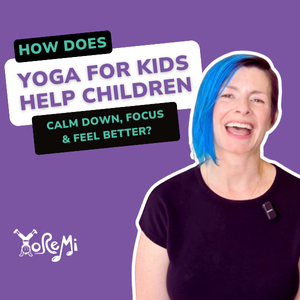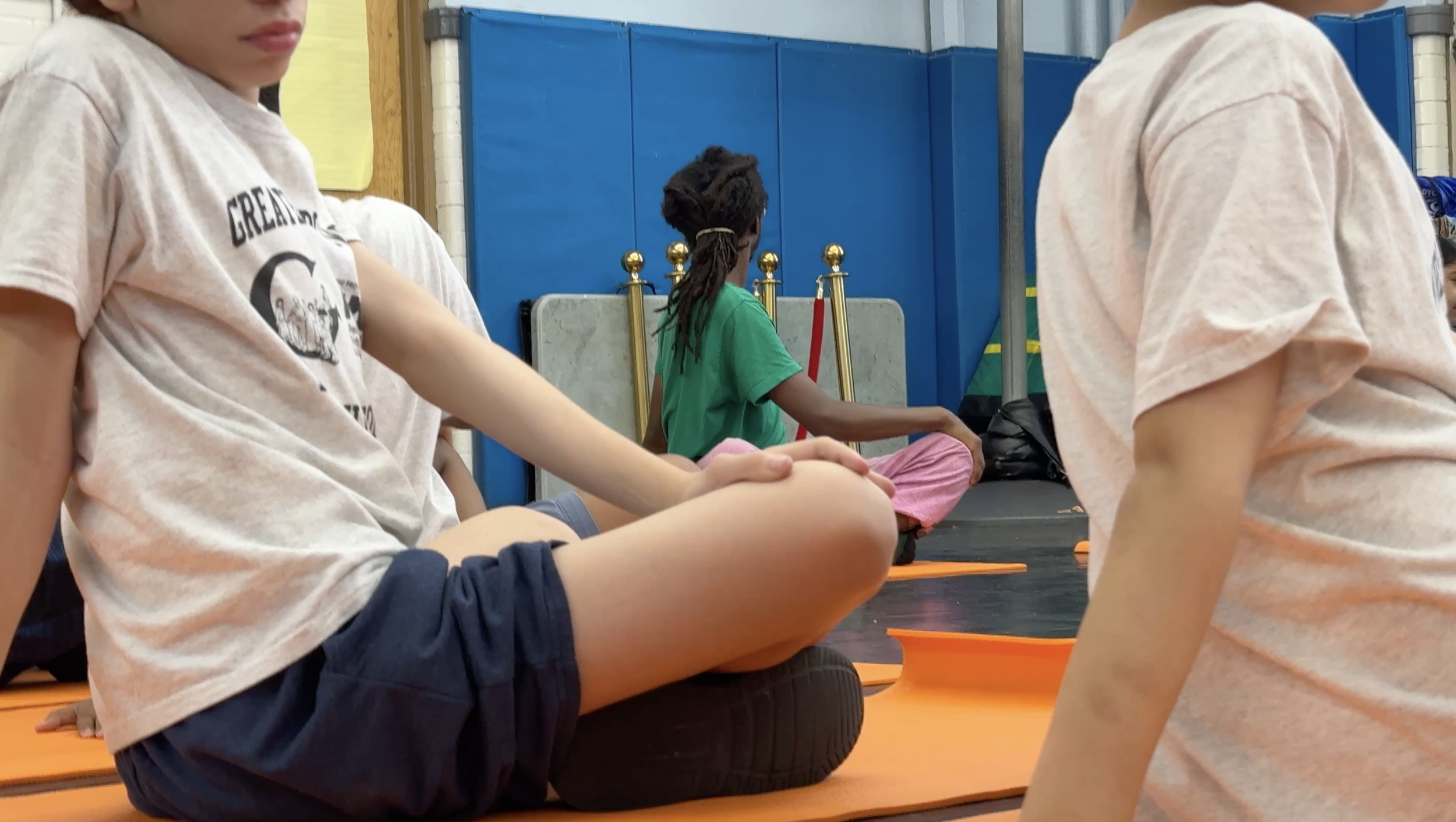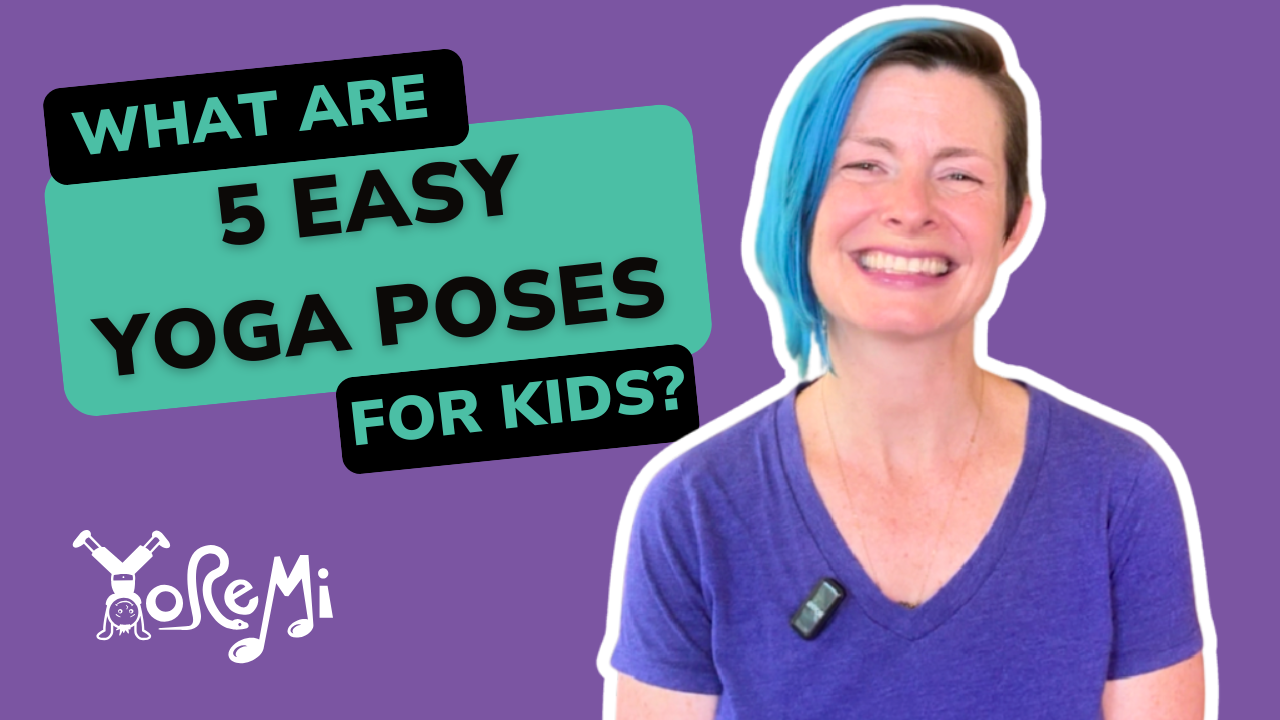How to Spread Love Using Yoga and Mindfulness Practices
Love makes the world go round and we can never have too much of it. Humans require love and affection from the time we are born to properly develop physically, emotionally and psychologically. There is no such thing as loving a child too much or showing too much care.
But our lives get busy, and sometimes all the to-do’s leave little time for loving moments.
When we are rushing, running ourselves ragged on the hamster wheel of life, we end up taking ourselves and each other for granted.
Truly meaningful communication only becomes possible when we are in a safe and social state, and our nervous system is in parasympathetic “rest and digest” mode.
If two people want to connect, both have to slow down and create the space for it. So if you and yours could use a little boost of love in your life, check out our four favorite music, yoga and mindfulness activities that help spread the L-O-V-E!
1. L is for Love Myself
Before we can share love with others, we have to send some love to ourselves. But most of us are our own worst critic and that’s a bad habit that is hard to break. If you notice that you are being hyper-critical of others, it’s a red flag to check in to see how you might be talking to yourself.
The bully inside my mind is vicious…that awful voice speaks loudest in moments I am frustrated, discouraged or worried and says things like “I’m not smart enough” or “I can’t do it” or “I’m such a screw-up.”
We all have this inner critic and while we might not be able to silence that voice completely, we can choose whether we actually believe what it is saying.
Once we bring awareness to our thoughts, we learn to create space to differentiate between our story and reality. Noticing the negative, or unhelpful thoughts, can clue us into the support and care we are craving. And then we can give it to ourselves.
Try this: Affirmation Yoga
Notice the thoughts you are having throughout your day, especially ones that are harmful or repetitive.
What would the opposite be and feel like? For example, “I can’t do it” might become “I am powerful.” Or a positive progress statement like, “I grow stronger every day.”
Say your affirmation as you practice a yoga pose or sequence that makes you feel the energy of the intention you are creating. You can also say it to yourself in the mirror every morning and at night before you go to bed.
Affirmations help support a healthy inner dialogue, so we love to accompany them with yoga poses! Repeat after Rachel and say each affirmation aloud as you practice the poses. If you are winding down, try a guided affirmation relaxation instead.
2. O is for Observe Gratitude
Several studies have shown the overwhelming benefits of a regular gratitude practice. People who count their blessings tend to be happier and less depressed.
Gratitude helps people feel more positive emotions, improve their health, appreciate good experiences, deal with adversity, and build strong relationships.
We love drama! Sometimes it feels like everyone is in a competition to see who can feel the most tired, overwhelmed or victimized. We complain a lot and wear our negative experiences like a badge of honor. But that’s not healthy…and we might spend so much time complaining and worrying, we forget all the things that are going well.
Taking some time to slow down and think about all the positive things in our lives will improve our outlook and our health. Whether you keep a gratitude journal, list gratitudes as a family over dinner or say them aloud before bed, any way you practice will make a huge difference.
Try this: Breathing ball gratitude practice
Sit in a circle so everyone feels seen, heard and included.
Lead one breath with the breathing ball and then say something you are grateful for.
Pass the ball around the circle giving each child a chance to lead a breath and say one gratitude.
3. V is for Value Rest
More than a third of American adults are not getting enough sleep on a regular basis (CDC, 2016 Morbidity and Mortality Weekly Report). We drink coffee, overeat, complain and then carry on. Exhaustion is the new normal and sometimes even praised in our culture…look how hard we are working.
Now we are passing our poor sleep habits onto our kids. Children ages 3 to 7 who don’t get enough sleep are more likely to have problems with attention, emotional control, and peer relationships in mid-childhood, according to a recent study led by a Harvard pediatrician.
But we don’t need a study to tell us that rest is important. We do need to change the negative Western cultural attitudes toward rest and we can start with ourselves. Children copy what we do rather than what we say. If we want our kids to have a positive relationship with rest and self-care, we have to model it.
Try this: Ukulele Relaxation
Lie on your back in relaxation pose. Place a pillow under the knees or cover up with a blanket if needed.
Get cozy and comfortable.
Take deep breaths in and out, allowing each exhale to relax the body and mind.
Feel the body soften and sink down into the support of the floor.
Stay, still and quiet, for at least 5 minutes. You can never stay too long!
If you are practicing with young children, playing a chime, singing bowl or other musical instrument may help them relax by focusing the mind on the sound.
4. E is for Elevate Empathy
Kids yoga is great for teaching social emotional skills like cooperation, compassion and empathy. Practicing partner yoga poses can be a fun way for children to learn to work together, support and listen to one another.
Encourage students to try practicing partner yoga utilizing non-verbal communication - can they be successful by tuning into their partner’s body language, facial expressions and energy?
Learning to understand and respond appropriately to their partner’s needs while having the other person respond to theirs creates an opportunity to learn relationship skills most adults still struggle with.
Studies have shown that Loving Kindness Practice (also known as Metta Meditation) done daily for just 5 minutes can increase positive emotions while reducing negative feelings, decrease chronic pain, strengthen empathy and emotional intelligence, and increase gray matter in the brain. The practice makes us more helpful, compassionate and empathetic, while decreasing implicit bias and self-criticism.
Try this: Loving Kindness Practice
Find a comfortable position for your body, either lying in relaxation or a supported seat.
Breathe in and out slowly through your nose with your mouth closed. Feel the air travel through your nose, down the back of your throat, and then into your lungs. Belly gets big as your lungs fill and contracts gently as your lungs empty.
Continue belly breathing as we practice loving kindness.
Bring into your mind someone that you love very much. Picture them as clearly as you can. Imagine you are sending loving kindness to that person and notice how that makes your heart feel.
Send some wishes to that person…Think "May you be happy, may you be healthy, may you be peaceful, may you be filled with joy."
Bring into your mind a friend. Picture them as clearly as you can. Now send loving kindness to your friend… "May you be happy, may you be healthy, may you be peaceful, may you be filled with joy."
Bring into your mind someone you don’t know, perhaps someone you have seen in your neighborhood or someone at school you have never met. Picture them as clearly as you can. Now send loving kindness to that person..."May you be happy, may you be healthy, may you be peaceful, may you be filled with joy."
Now picture yourself as clearly as you can. Send loving kindness to yourself... "May you be happy, may you be healthy, may you be peaceful, may you be filled with joy."
Take a big inhale in. Sigh out a long exhale.
Love is a powerful and unlimited resource…the more love we give to ourselves and others, the more love we have. Singing songs together is also a wonderful way to create feelings of connection and belonging. It also exercises the brain, improves breathing and posture and reduces muscular tension.
Sing along to this classic song, “Love Is Something” by Malvina Reynolds. See if you can feel the LOVE-ly benefits of group singing.
Want one more way to increase feelings of love and well-being that can be done anytime, anywhere? Put the tips of your fingers and thumbs together into the shape of a heart.
Place that heart gesture over your chest, closing your eyes.
Relax your shoulders down your back as you take a deep breath in and out.
As you breath in, imagine you are receiving all the love in the world.
As you breathe out, send that love back out to everyone, everywhere.
Continue to breathe, receiving and sending love like waves of the ocean, in and out. Stay as long as you can and ride the waves.














